Hermit crabs are unique creatures that have captured the attention of people all over the world. These interesting animals are not only fun to watch but they are also relatively easy to care for, making them popular pets. One of the most common questions people ask about hermit crabs is “How long do hermit crabs live?” The answer to this question is not as simple as it may seem.
How Long Do Hermit Crabs Live As Pets?
Most hermit crabs live between 10 and 20 years, but some have been known to live up to 30 years. Hermit crabs are a popular pet, but many people don’t realize how long they can live. That’s a long time to commit to a pet!
These creatures require special care and attention, and you’ll need to be prepared to provide for them for many years to come. If you’re thinking of getting a hermit crab, make sure you’re prepared for a long-term commitment.
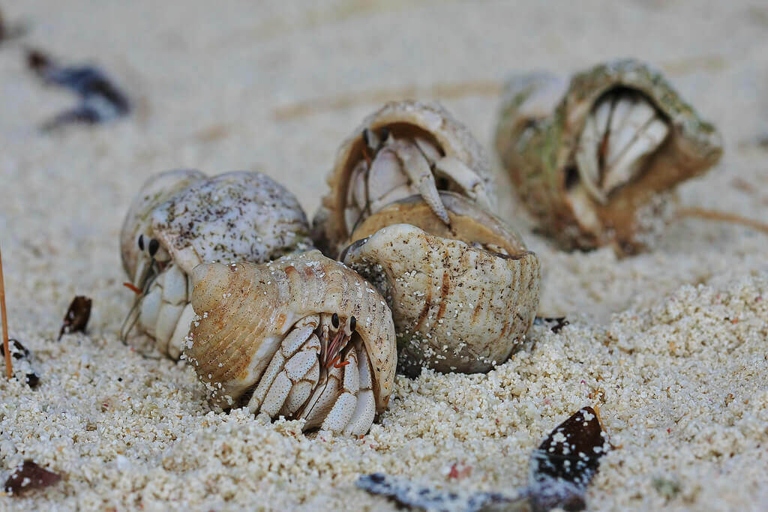
Hermit crabs can make great pets, but be sure you’re ready for a long-term commitment before you bring one home. With proper care, your hermit crab could be a part of your family for many years to come.
How Long Do Hermit Crabs Live in the Wild?
In captivity, hermit crabs typically live for 5 to 10 years. The main factors that affect a hermit crab’s lifespan are diet, humidity, and temperature. In the wild, hermit crabs can live up to 30 years, although the average lifespan is about 10 years.
In the wild, hermit crabs typically eat dead leaves, fruits, and vegetables. Hermit crabs are omnivorous, meaning they eat both plants and animals. A diet that is low in protein and high in fiber can help extend a hermit crab’s lifespan. They also eat small insects and other invertebrates.
If the humidity is too high, hermit crabs can develop respiratory problems. If the humidity is too low, hermit crabs can become dehydrated. The ideal humidity for hermit crabs is 75 to 80%.
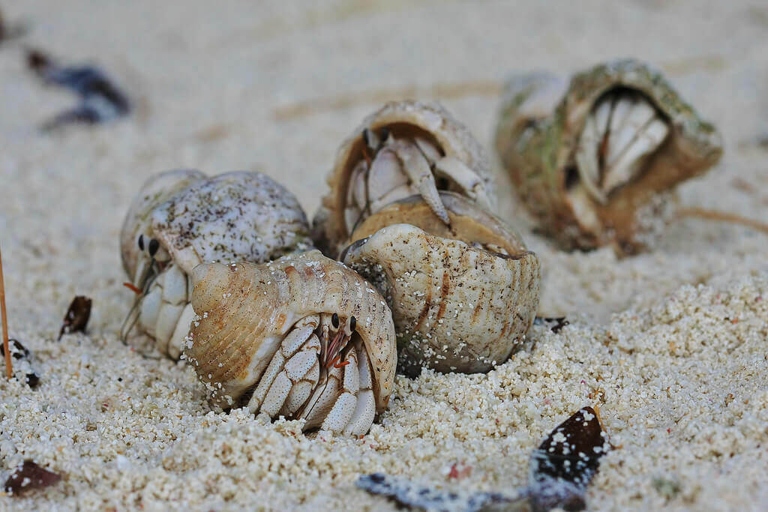
The ideal temperature for hermit crabs is 75 to 85 degrees Fahrenheit. If the temperature is too cold, hermit crabs can become sluggish and may stop eating. If the temperature is too hot, hermit crabs can overheat and may die.
Why Is There a Huge Difference in Life Expectancy Between Pet Hermit Crabs and Wild Hermit Crabs?
They also don’t have to worry about being handled by humans or other predators. Pet hermit crabs typically have a much shorter lifespan than their wild counterparts. They may also be fed an inadequate diet and not given enough access to clean water. In captivity, however, hermit crabs are often kept in small tanks or cages with little to no room to move around. In the wild, hermit crabs have a wide range of places to live and plenty of food to eat. These factors can all lead to a shortened lifespan for pet hermit crabs. There are a number of reasons for this, including the fact that they are often kept in captivity in less-than-ideal conditions.
Environmental Needs
As hermit crabs grow, they molt, or shed their exoskeletons. This process can take anywhere from a few days to a few weeks, and during this time, the crab is vulnerable to predators and other dangers. After molting, the crab’s new exoskeleton is soft and must harden before the crab can return to its normal activities.
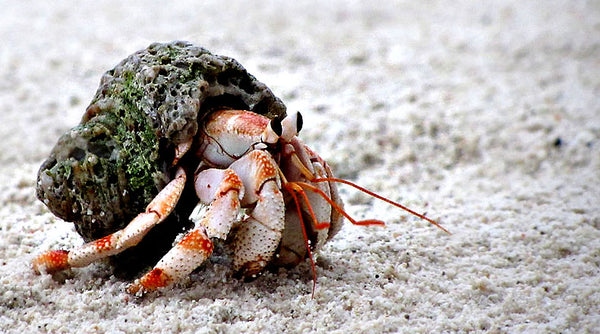
The ideal humidity for hermit crabs is between 75% and 80%. During this molting process, hermit crabs need a moist environment with high humidity. If the humidity is too high, the crab will be at risk of drowning. If the humidity is too low, the crab will not be able to molt properly and its new exoskeleton will be too brittle.
Hermit crabs also need a place to hide while they molt. This can be a cave, a burrow, or even a small box. The important thing is that the crab feels safe and secure while it is molting.
Toxicity and Infection Risks
They are relatively easy to care for, but there are some things to be aware of in order to keep your hermit crab healthy and happy. Hermit crabs are interesting creatures that are often kept as pets. One of the most important things to be aware of is the risk of toxicity and infection.
It is important to only use products that are safe for hermit crabs and to avoid using any products that could potentially be toxic. Hermit crabs are very sensitive to their environment and can easily become sick if they are exposed to toxins or chemicals.
Another thing to be aware of is the risk of infection. If you notice any changes in your hermit crab’s behavior or appearance, it is important to take them to the vet for a check-up. Hermit crabs are susceptible to a variety of infections, so it is important to keep their environment clean and to monitor them for any signs of illness.
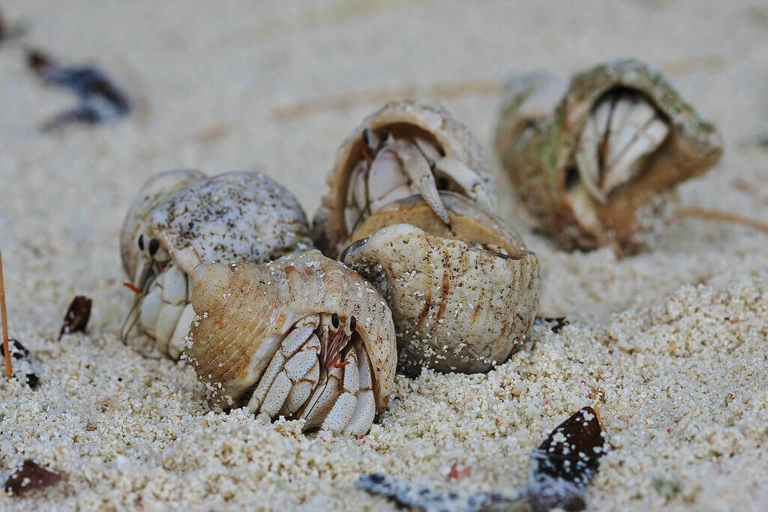
By following these simple tips, you can help ensure that your hermit crab has a long and healthy life.
Stress and Traumas
In the wild, hermit crabs can live up to 30 years, but in captivity, they typically only live for about 10 years. Stress and trauma can shorten the lifespan of hermit crabs.
They may be kept in small cages, with little to no room to move around. This can cause them to become stressed and may even lead to self-harm. Stress and trauma can occur when hermit crabs are kept in captivity.
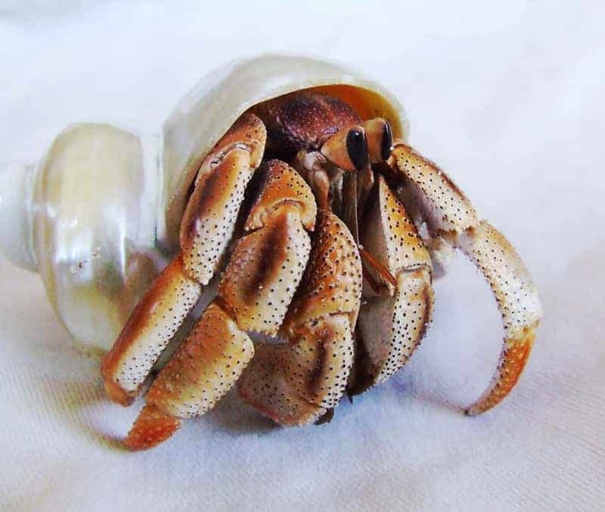
Trauma can also occur if hermit crabs are handled roughly or if they are dropped. This can cause them to become injured, which can lead to infection and even death.
This will help you to provide them with the best possible environment and help them to live a long and healthy life. If you are considering keeping a hermit crab as a pet, it is important to research their care requirements.
Animal Attacks
In fact, hermit crabs are known to be aggressive and have been known to attack other animals. While their lifespan is typically around 10 years, they can live longer if they are well-cared for. Animal attacks are not uncommon.
Mutilation
Hermit crabs are often seen as low-maintenance pets, but they still require some care to ensure a long and healthy life. One important aspect of hermit crab care is preventing mutilation.
Poorly maintained tanks can lead to sharp edges that the crabs can cut themselves on, and overcrowding can cause crabs to fight and injure each other. Mutilation is a serious problem that can occur when hermit crabs are kept in inadequate conditions.
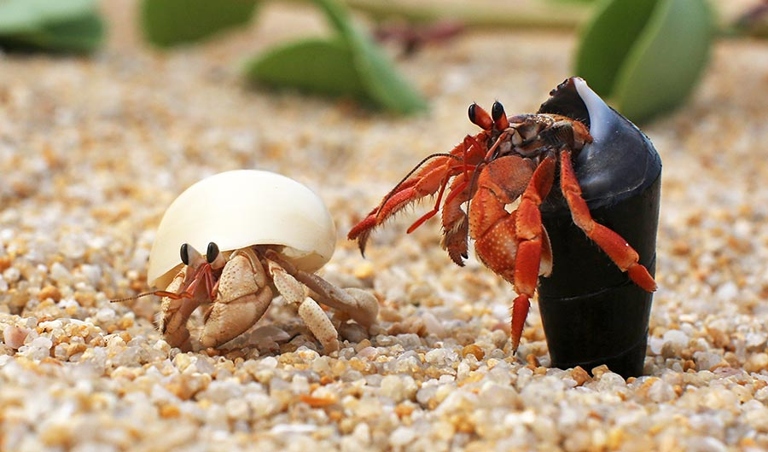
To prevent mutilation, it is important to provide hermit crabs with a well-maintained tank that has no sharp edges. The tank should also be large enough to allow each crab plenty of space to move around. If you suspect that your crab is injured, take it to a vet for treatment as soon as possible.
Drowning
Drowning is one of the leading causes of death for hermit crabs. When they are submerged, they will eventually suffocate and drown. They are unable to breathe underwater and must keep their gills moist in order to survive.
They are also kept as pets in aquariums where they can easily drown if the water level drops too low. Hermit crabs are often found in tide pools where they are constantly exposed to the risk of being submerged by waves.
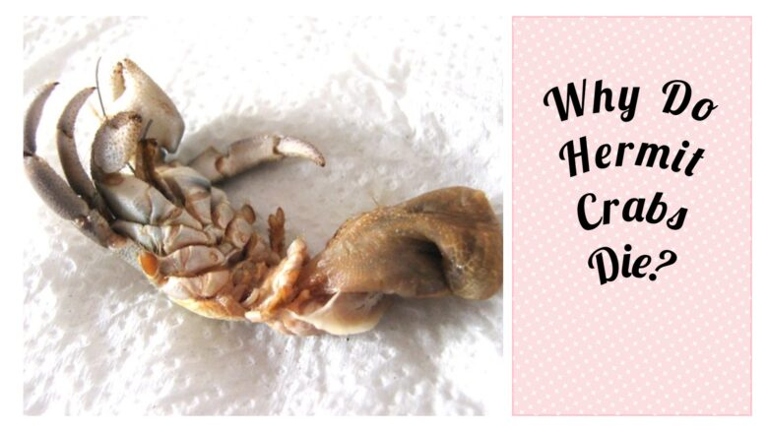
To prevent drowning, hermit crabs should be kept in an environment where they can easily climb to the surface if they become submerged. This can be achieved by providing them with a shallow water dish or by keeping them in an aquarium with a glass lid.
What Are Some Factors That Affect a Hermit Crab’s Lifespan in the Wild?
One of the most important factors is the availability of food. If the temperature drops too low, hermit crabs will go into hibernation and their metabolism will slow down, which can shorten their lifespan. Another important factor is the temperature of the environment. Hermit crabs are tropical animals and cannot survive in cold temperatures. Finally, the level of humidity in the environment is also important. If a hermit crab lives in an area with plenty of food, it will likely live longer than a hermit crab in an area with scarce food. There are many factors that affect a hermit crab’s lifespan in the wild. Hermit crabs need a high level of humidity to stay healthy, and if the humidity is too low, it can cause dehydration and other health problems.
Predators
They are relatively easy to care for and can live for many years with proper care. Hermit crabs are small, land-dwelling crabs that are popular pets.
Hermit crabs are social creatures and do best when kept in groups. Hermit crabs are not true crabs, but are more closely related to lobsters and shrimp. They have a hard, protective shell that they must find or build for themselves.
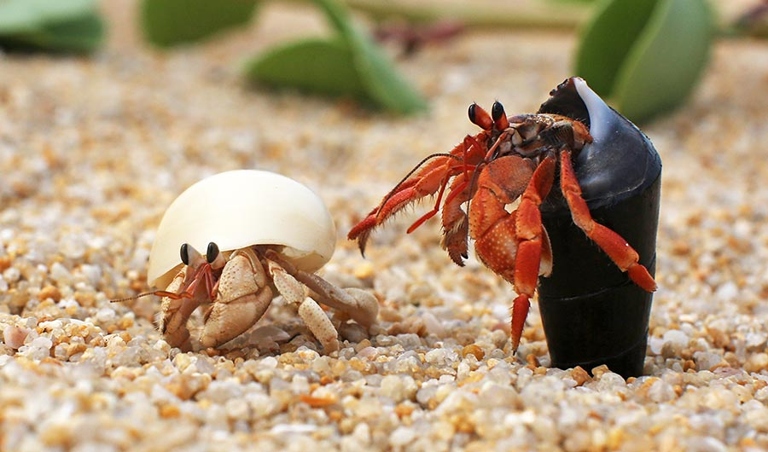
They need a diet that is high in calcium to help them grow and shed their shells properly. Hermit crabs are omnivorous and will eat a variety of foods, including vegetables, fruits, and meat.
They are also known to climb and may escape their enclosure if it is not secure. Hermit crabs are not typically aggressive, but they can pinch if they feel threatened.
They make interesting and unique pets that can provide years of enjoyment. With proper care, hermit crabs can live for 10-20 years in captivity.
Changes in the Environment
This process can take anywhere from a few hours to a few days, and during this time, the crab is very vulnerable. As hermit crabs grow, they molt, or shed their exoskeletons. Hermit crabs typically molt every few months, but the frequency can increase if the crab is stressed or its environment is not ideal.
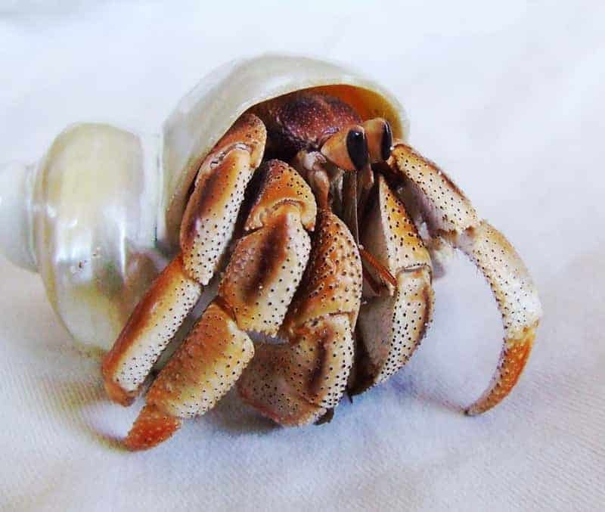
After a hermit crab molts, its new exoskeleton is soft and needs time to harden. Once the new exoskeleton has hardened, the crab’s shell will gradually darken and harden as well. During this time, the crab is especially vulnerable to predators and should be kept in a safe, secluded place.
If a crab cannot find a new shell, it will eventually die. When this happens, they must find a new shell that fits them properly. Over time, hermit crabs can slowly outgrow their shells.
How Long Do Different Hermit Crab Species Live?
For example, the Caribbean hermit crab has an expected lifespan of about 10-20 years, while the Ecuadorian hermit crab can live for up to 30 years. Different species of hermit crabs have different expected lifespans.
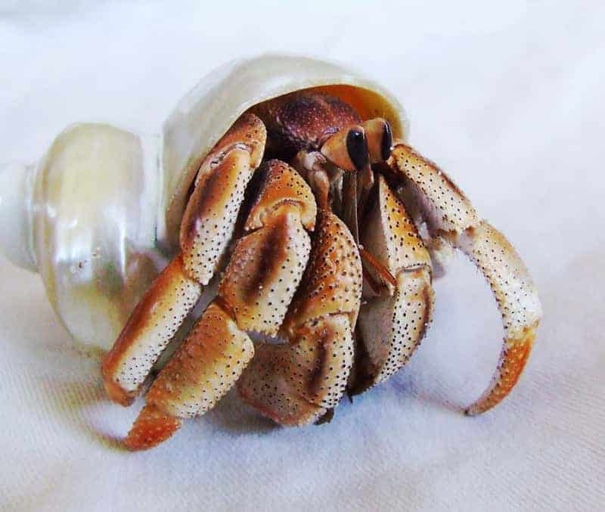
For example, hermit crabs kept in captivity often have a shorter lifespan than those in the wild. This is because captive hermit crabs may not have access to the same food and shelter as their wild counterparts. The lifespan of a hermit crab is also affected by its environment and care.
Stress can shorten a hermit crab’s lifespan, so it’s important to provide them with a comfortable and stable environment. Hermit crabs are also susceptible to stress. This can be caused by overcrowding, changes in temperature or humidity, and lack of food or water.
What to Do to Increase the Lifespan of a Pet Hermit Crab?
There are several things that owners can do to help their hermit crab live a long and healthy life. Hermit crabs are a unique pet that can provide their owners with years of enjoyment. However, like all pets, hermit crabs have a finite lifespan.
A variety of fresh fruits and vegetables, as well as a quality hermit crab food, should be offered daily. One of the most important things owners can do is to provide their crab with a proper diet. Hermit crabs are omnivores and need a diet that includes both plant and animal matter.
Crabs should be kept in a large enclosure that provides plenty of space for them to climb, explore, and hide. Another important factor in a hermit crab’s longevity is its housing. The enclosure should also be equipped with a shallow dish of water for bathing and a humidifier to help maintain the proper level of humidity.
Finally, it is important to handle hermit crabs with care. Crabs are delicate creatures and can be easily injured by rough handling. When picking up a crab, be sure to support its body from underneath.

By following these simple guidelines, owners can help their hermit crab live a long and healthy life.
Provide a Comfortable Environment for Your Crabs
Second, crabs need a variety of hiding places and climbing surfaces, so be sure to include both in their tank. First, crabs need a warm and humid environment, so be sure to keep their tank out of direct sunlight and away from any drafts. When it comes to providing a comfortable environment for your crabs, there are a few key things to keep in mind. By following these simple guidelines, you can help your crabs live a long and healthy life. Finally, crabs are sensitive to chemicals, so be sure to use only safe, natural products in their tank.
Monitor the Humidity and Temperature Levels in the Tank Closely
If you want your hermit crab to have a long and healthy life, you need to monitor the humidity and temperature levels in their tank closely. The ideal humidity level for a hermit crab tank is 75-80%, and the ideal temperature is 75-85 degrees Fahrenheit.
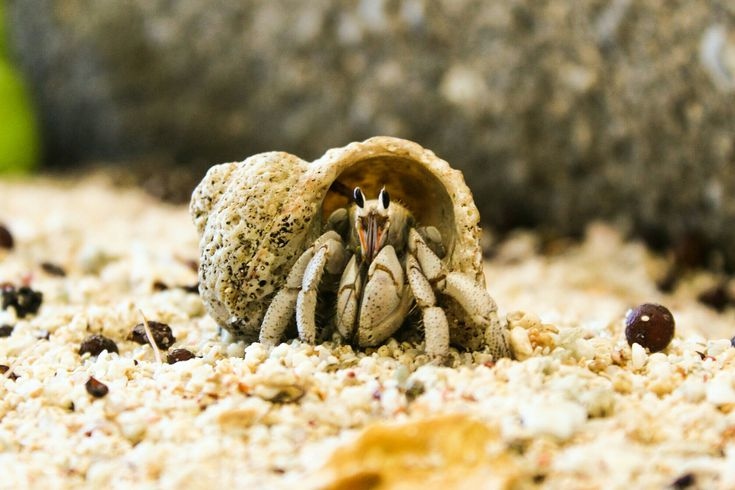
If the humidity and temperature levels in your hermit crab’s tank are too low, they will become stressed and their immune system will be weakened. This can lead to a number of health problems, including respiratory infections, shell rot, and even death.
Adjust the humidity and temperature levels as needed to create a comfortable and safe environment for your hermit crab. To avoid these problems, make sure to use a hygrometer to monitor the humidity levels in your hermit crab’s tank, and use a thermometer to monitor the temperature.
Keep the Tank Clean At All Times
It is important to keep the tank clean at all times in order to ensure the health and longevity of your hermit crab. A dirty tank can lead to a number of health problems for hermit crabs, including respiratory infections, shell rot, and even death.
A clean tank is essential for hermit crab health. Remove all food and debris, and scrub the tank with a mild soap and water solution. Rinse the tank thoroughly before adding fresh water and sand. Be sure to clean the tank at least once a week, and more often if necessary.

By keeping the tank clean, you can help your hermit crab live a long and healthy life.
Feed Your Crabs a Healthy, Nutritious Diet
This process can leave them vulnerable and in need of extra nutrition. A healthy, nutritious diet is essential to keeping your crab happy and healthy. As hermit crabs grow, they molt, or shed their exoskeletons.
A variety of fresh fruits and vegetables, as well as meat, should be included in their diet. Some good options include: Hermit crabs are omnivores, which means they eat both plants and animals.
-Fruits: apples, bananas, grapes, mangoes, melons, papayas, strawberries
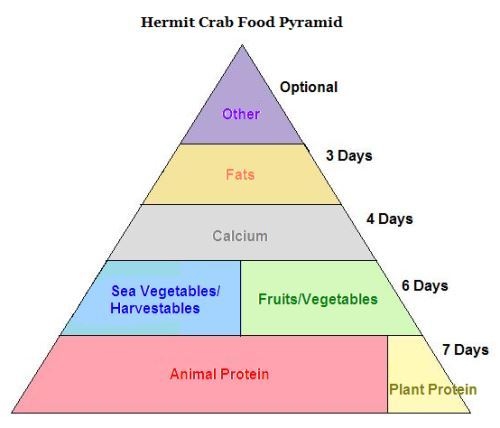
-Vegetables: carrots, celery, cucumbers, green beans, lettuce, peas, sweet potatoes
-Meat: cooked chicken, fish, shrimp
Be sure to remove any uneaten food from their enclosure, as it can spoil and make them sick. A good rule of thumb is to offer your crab a variety of foods, and let them choose what they want to eat.
A healthy diet is essential to a long and happy life for your hermit crab. By offering them a variety of fresh fruits, vegetables, and meat, you can help them stay healthy and active for years to come.
Pay Attention to How You Handle Your Hermit Crabs
Hermit crabs are interesting creatures that can make great pets. However, it’s important to pay attention to how you handle your hermit crabs. If you’re not careful, you can easily injure them.
If you handle them too roughly, you can break their exoskeletons. However, their exoskeletons are not as strong as they look. This can be very painful for the crab and can even kill them. Hermit crabs have a hard exoskeleton that protects their soft bodies.
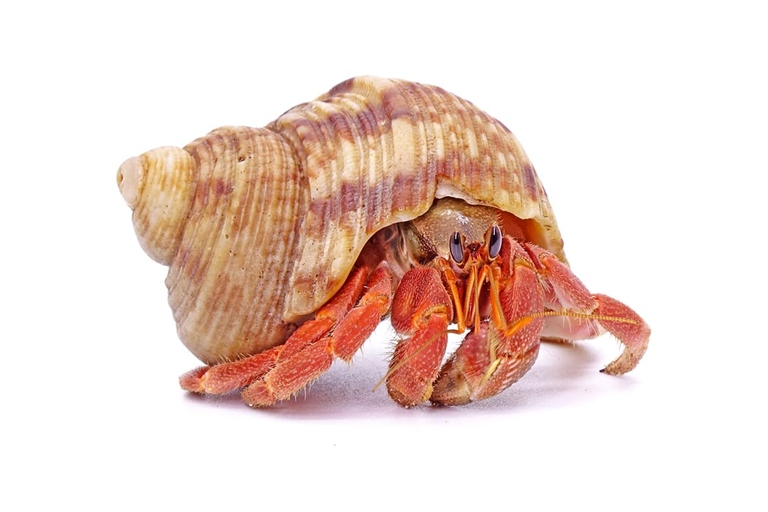
When handling hermit crabs, it’s important to be gentle. If you’re not sure how to pick them up, ask a pet store employee for help. Hold them close to your body so they feel secure, and avoid dropping them.
With proper care, hermit crabs can make great pets that will bring you years of enjoyment. Pay attention to how you handle them, and you’ll be able to keep your crabs healthy and happy.
Don’t Touch the Crabs During the Molting Process
They are relatively easy to care for, but there are some things to keep in mind to ensure their long and healthy life. Hermit crabs are interesting creatures that are often kept as pets. One important thing to remember is not to touch the crabs during the molting process.
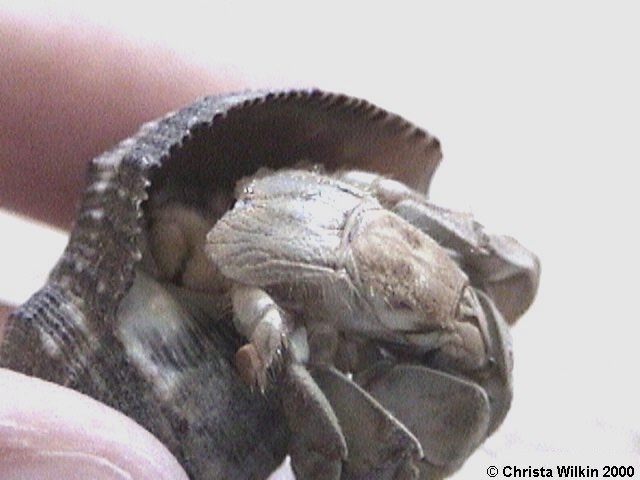
The molting process can take anywhere from a few days to a few weeks and it is important to give the crab plenty of time and space to complete this process. Molting is a process where the crab sheds its old shell and grows a new one. This process can be stressful for the crab and if they are touched during this time, it can cause them to die.
With proper care, hermit crabs can live for many years and provide their owners with hours of enjoyment. Once the crab has molted, you can then handle them and enjoy their company.
Frequently Asked Questions
1. How long do hermit crabs live?
The average lifespan of a hermit crab is about 10 to 20 years. However, some hermit crabs have been known to live up to 30 years in captivity.
2. What factors affect a hermit crab’s lifespan?
The lifespan of a hermit crab is affected by several factors, including diet, housing, and care. For example, a hermit crab that is well-fed and lives in a clean and spacious enclosure is likely to live longer than a hermit crab that is neglected.
3. How can I tell if my hermit crab is healthy?
There are several signs of a healthy hermit crab, including a active and alert, shiny and moist exoskeleton, and clear and bright eyes. If you notice any of these signs, your hermit crab is likely healthy.
4. What are some common health problems in hermit crabs?
Hermit crabs are susceptible to a number of health problems, including shell rot, respiratory infections, and parasites. If you notice any of these problems, it is important to seek veterinary care for your hermit crab.
5. How can I help my hermit crab live a long and healthy life?
There are several things you can do to help your hermit crab live a long and healthy life. First, make sure to provide a clean and spacious enclosure. Second, provide a varied diet that includes both fresh and dried foods. Third, avoid using chemicals in the enclosure, as these can be harmful to hermit crabs. Finally, take your hermit crab to the vet for regular check-ups.
Final thoughts
Hermit crabs are a unique pet that can live a long time if taken care of properly. The average lifespan of a hermit crab is 10 to 30 years, but some have been known to live up to 40 years. Hermit crabs make great pets for people of all ages and are a low-maintenance pet that is sure to bring years of enjoyment.
